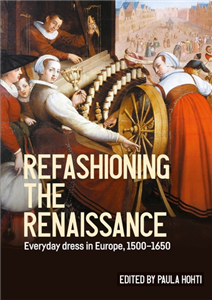Description
More Information
Rights Information
Albania, Algeria, Angola, Argentina, Armenia, Australia, Austria, Bahrain, Belgium, Belize, Benin, Bolivia, Bosnia and Herzegovina, Botswana, Brazil, Bulgaria, Burkina Faso, Burundi, Cameroon, Canada, Cape Verde, Central African Republic, Chad, Chile, China, Colombia, Comoros, Congo [DRC], Congo, Republic of the, Costa Rica, Ivory Coast, Croatia, Czech Republic, Denmark, Djibouti, Ecuador, Egypt, El Salvador, Equatorial Guinea, Eritrea, Estonia, Ethiopia, Faroe Islands, Finland, France, French Guiana, Gabon, Gambia, Georgia, Germany, Ghana, Greece, Guatemala, Guinea, Guinea-Bissau, Guyana, Honduras, Hongkong, Hungary, Iceland, India, Indonesia, Iran, Iraq, Ireland, Israel, Italy, Japan, Jordan, Kazakhstan, Kenya, Kuwait, Latvia, Lebanon, Lesotho, Liberia, Libya, Lithuania, Luxembourg, Macau, China, Macedonia [FYROM], Madagascar, Malawi, Malaysia, Mali, Malta, Mauritania, Mauritius, Mayotte, Mexico, Mongolia, Montenegro, Morocco, Mozambique, Namibia, Netherlands, New Zealand, Nicaragua, Niger, Nigeria, Norway, Oman, Pakistan, Panama, Paraguay, Peru, Philippines, Poland, Portugal, Puerto Rico, Qatar, Reunion, Romania, Russia, Rwanda, Saint Helena, Sao Tome and Principe, Saudi Arabia, Senegal, Serbia, Seychelles, Sierra Leone, Singapore, Slovakia, Slovenia, Somalia, South Africa, South Korea, Spain, Sri Lanka, Sudan, Suriname, Swaziland, Sweden, Switzerland, Syria, Taiwan, Tanzania, Thailand, Timor-Leste, Togo, Tokelau, Tunisia, Turkey, Uganda, Ukraine, United Arab Emirates, United Kingdom, United States, Uruguay, Venezuela, Vietnam, Western Sahara, Yemen, Zambia, Zimbabwe, South Sudan, Cyprus, Palestine, Bangladesh, Cambodia, Liechtenstein, Azerbaijan, Jamaica, Kyrgyzstan, Dominican Republic, Myanmar, Monaco
Endorsements
How did ordinary men and women dress in the early modern period?Did they rely on cost-effective alternatives to the silks, jewellery, and ornate decorations favoured by the wealthy elite? Or did those with modest means find innovative ways to express their fashion sense? Refashioning the Renaissance provides new perspectives on early modern clothing by investigating the meaning of fashion among the 'popular' classes. Combining archival and pictorial evidence, historical reconstruction, hands-on experimentation, and scientific textile analysis, the book explores how men and women of artisan rank created a fashionable look and adapted to the evolving dynamics of the day. Offering a close examination of the materials, craftmanship, and cultural significance of both new and traditional fashion itemsavailable to a broad group of consumers, Refashioning the Renaissancechallenges conventional assumptions that suggest the everyday dress of ordinary early modern families was limited to a narrow selection of garments made of coarse textiles, often produced at home and resistant to change.
Reviews
How did ordinary men and women dress in the early modern period?Did they rely on cost-effective alternatives to the silks, jewellery, and ornate decorations favoured by the wealthy elite? Or did those with modest means find innovative ways to express their fashion sense? Refashioning the Renaissance provides new perspectives on early modern clothing by investigating the meaning of fashion among the 'popular' classes. Combining archival and pictorial evidence, historical reconstruction, hands-on experimentation, and scientific textile analysis, the book explores how men and women of artisan rank created a fashionable look and adapted to the evolving dynamics of the day. Offering a close examination of the materials, craftmanship, and cultural significance of both new and traditional fashion itemsavailable to a broad group of consumers, Refashioning the Renaissancechallenges conventional assumptions that suggest the everyday dress of ordinary early modern families was limited to a narrow selection of garments made of coarse textiles, often produced at home and resistant to change.
Author Biography
Paula Hohti is Professor of History of Art and Culture at Aalto University.
Manchester University Press
Manchester University Press is a leading UK publisher known for excellent research in the humanities and social sciences.
View all titlesBibliographic Information
- Publisher Manchester University Press
- Publication Date January 2025
- Orginal LanguageEnglish
- ISBN/Identifier 9781526164650 / 1526164655
- Publication Country or regionUnited Kingdom
- FormatPrint PDF
- Pages384
- ReadershipGeneral/trade; College/higher education; Professional and scholarly
- Publish StatusPublished
- Dimensions240 X 170 mm
- Biblio NotesDerived from Proprietary 5606
- SeriesStudies in Design and Material Culture
- Reference Code14657
Manchester University Press has chosen to review this offer before it proceeds.
You will receive an email update that will bring you back to complete the process.
You can also check the status in the My Offers area

Please wait while the payment is being prepared.
Do not close this window.



